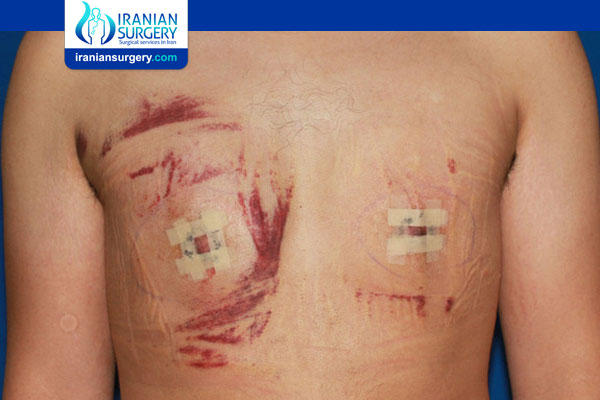Gynecomastia Surgery Side Effects
Gynecomastia Surgery Side Effects
Gynecomastia is a condition that causes enlargement of male breast tissue. It is often a great source of shame and embarrassment for men. The numbers of men seeking out surgery for gynecomastia have continued to increase over the years. I continue to see more and more men wanting to surgically improve the look of their chests.
During puberty, hormonal surges can lead to the growth of male breast tissue. In some cases, this breast tissue shrinks after puberty, but in many cases, the breasts remain enlarged. The prevalence of asymptomatic gynecomastia is 60% to 90% in children, 50% to 60% in adolescents and up to 70% in men aged 50 to 69 years.
Common causes of gynecomastia include puberty, excess weight gain, use of anabolic steroids in bodybuilders and use of marijuana. A number of other medications also cause male breast enlargement.
How Do I Know If I Have Gynecomastia?
Gynecomastia usually occurs in both breasts, but patients may have with asymmetric or unilateral breasts. Breast self-exams usually demonstrate a palpable, tender, firm, mobile, disc-like mound of tissue that is not as hard as breast cancer and is located centrally under the nipple-areolar complex.
When palpable masses are unilateral, hard, fixed, peripheral to the nipple and associated with nipple discharge, skin changes or enlarged lymph nodes, breast cancer should be suspected and thorough evaluation is recommended, including the performance of mammograms and MRI.
Surgery To Correct Gynecomastia
When patients come in with a complaint of gynecomastia, they usually complain about lumps in their breasts with or without excess fat in the breasts. Surgery to remove the breast tissues usually involves liposuction of the excess fat, surgical removal of the excess glandular breast tissue through an incision in the margin of the nipple-areolar complex and/or skin excision (in very large male breasts). It is important that your surgeon perform a proper physical exam of your breasts to confirm gynecomastia and rule out the suspicion for male breast cancer.
Preparing for surgery involves making sure that you stop medications that increase the risk of bleeding, stopping smoking and increasing your nutrition to support your healing and recovery after surgery. Most surgeons perform the operation under general anesthesia, but it is a procedure that is also well-suited to being performed under oral sedation and local anesthesia. Many surgeons use drains after surgery to reduce the chance of fluid collections. The use of compression vests and icing is also common to help control pain, reduce swelling and control bruising.
Recovery After Surgery
In patients who only need liposuction to correct their enlarged male breasts, return to exercise and work is typically less than one week. For patients who need surgical removal of the excess breast tissue, it can take between two to four weeks to heal enough to tolerate routine activities. In my practice, my patients are able to go back to work after surgery at 7-10 days. They are able to get back to the gym for cardio at 2 weeks and weightlifting at 4 weeks barring complications from surgery.
Gynecomastia Surgery Complications
In general, surgery for gynecomastia is incredibly safe and most patients have smooth recoveries. Despite the greatest attention to safety on the part of the patient and surgeon, complications can occur. Common complications include
. Anesthesia risks
. Bleeding (hematoma)
. Blood clots
. Breast asymmetry
. Breast contour and shape irregularities
. Changes in nipple or breast sensation may be temporary or permanent
. Damage to deeper structures – such as nerves, blood vessels, muscles and lungs – can occur and may be temporary or permanent
. Deep vein thrombosis, cardiac and pulmonary complications
. Fatty tissue found in the breast might die (fat necrosis)
. Fluid accumulation (seroma)
. Infection
. Persistent pain
. Poor wound healing
. Possibility of revision surgery
. Reactions to tape, suture materials, glues, topical preparations or injected agents
. Unfavorable scarring
Attention to meticulous surgical technique and pre/peri/postoperative management is essential to good outcomes.
About Iranian Surgery
Iranian surgery is an online medical tourism platform where you can find the best plastic surgeons in Iran. The price of Gynecomastia Treatment in Iran can vary according to each individual’s case and will be determined by an in-person assessment with the doctor.
For more information about the cost of Gynecomastia Treatment in Iran and to schedule an appointment in advance, you can contact Iranian Surgery consultants via WhatsApp number 0098 901 929 0946. This service is completely free.
Source:
https://www.plasticsurgery.org/news/blog/what-men-need-to-know-before-having-gynecomastia-surgery


